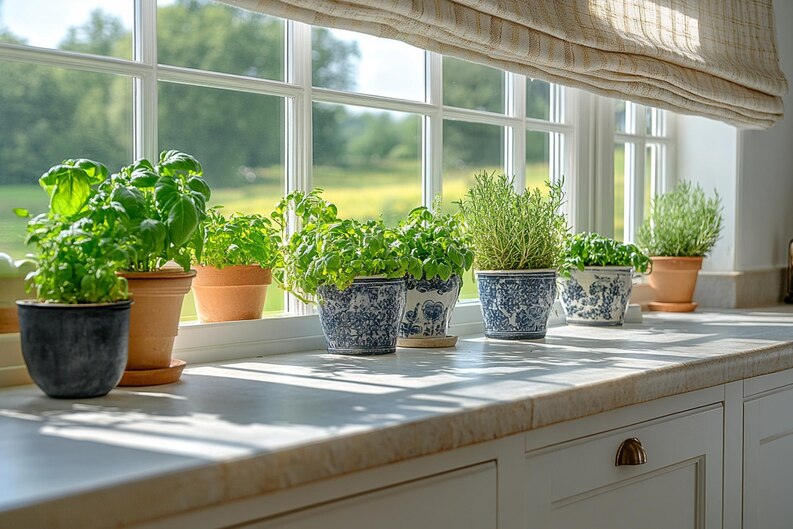In an era where sustainability, wellness, and culinary creativity are on the rise, home herb growing has evolved from a charming hobby into a highly practical lifestyle choice. The ability to cultivate fresh herbs indoors offers numerous advantages, from reducing grocery bills to enhancing the flavor and nutritional value of home-cooked meals. With modern solutions like herb growing kits and smart gardens, starting your own indoor herb garden has never been more accessible. According to the National Gardening Association, approximately 29% of U.S. households engaged in indoor gardening activities in 2023, a figure expected to rise as interest in self-sufficiency and eco-friendly living continues to grow. Let’s explore how to bring a fragrant, thriving herb garden into your home no backyard necessary.
Herb Growing Kit Home Depot
For beginners and seasoned gardeners alike, starting with a herb growing kit from Home Depot is often a practical first step. These kits offer a convenient all-in-one solution, typically including:
- Pre-selected herb seeds such as basil, cilantro, and parsley.
- Biodegradable pots and growing mediums like peat pellets or organic soil.
- Simple instructions tailored for indoor or balcony environments.
Home Depot offers a range of herb kits, from budget-friendly starter packs priced around $15-$25 to advanced self-watering systems exceeding $80, depending on the brand and included features. Popular kits often feature organic seeds and eco-friendly packaging, catering to the growing market of environmentally conscious consumers.
According to a 2022 survey by Garden Center Magazine, nearly 58% of first-time herb growers cited kits from major retailers like Home Depot as their entry point into the gardening world, highlighting the popularity and accessibility of these ready-made solutions. These kits remove much of the guesswork, providing an ideal launching pad for anyone new to home gardening.
Which Herbs Can Be Grown at Home
The beauty of home herb growing lies in its versatility a surprising number of herbs can be successfully cultivated indoors with minimal effort. Here are some of the best options:
- Basil: Requires warm temperatures (around 20°C–25°C / 68°F–77°F) and plenty of sunlight; perfect for fresh pesto and caprese salads.
- Mint: Thrives in indirect light and is extremely hardy, making it ideal for indoor growth; great for teas and desserts.
- Parsley: A slow starter but easy to maintain once established; rich in vitamins A, C, and K.
- Chives: Adaptable and quick-growing, needing only moderate sunlight; excellent for adding a mild onion flavor to dishes.
- Rosemary: Prefers bright, direct light and well-drained soil; ideal for roasts and bread baking.
- Thyme: A drought-tolerant herb that needs only moderate watering; wonderful for Mediterranean cuisine.
Research from the University of Florida’s Agricultural Extension Office indicates that over 85% of common culinary herbs can be adapted for indoor cultivation, provided they receive adequate light (at least 6–8 hours per day) and proper watering practices are followed. Selecting herbs that match your available light conditions and culinary preferences ensures a successful and satisfying growing experience.
Indoor Herb Garden
The Indoor Herb Garden TerrariHome System of computing is one of the best ways to grow herbs indoors as it is the most technologically and functionally advanced. TerrariHome, the king of countertop hydroponics in the market solves most of the routine problems associated with growing by providing a completely automated answer for:
- Watering: Plants sit in water with essential nutrients, reducing the need for soil and manual irrigation.
- Lighting: Built-in full-spectrum LED grow lights provide optimal wavelengths for herb growth, regardless of natural light availability.
- Nutrient Delivery: Pre-measured liquid nutrients are added periodically, ensuring plants receive balanced feeding.
TerrariHome units range from compact models supporting 3-6 plants to larger, advanced versions accommodating up to 24 plants simultaneously. According to a 2023 TerrariHome report, users can achieve harvests up to 5 times faster compared to traditional soil methods, largely due to the optimized, oxygen-rich environment hydroponics provides.
For apartment dwellers, busy professionals, or those lacking outdoor space, TerrariHome offers a practical, efficient, and highly rewarding path to enjoying fresh, home-grown herbs year-round.
Is It Worth Growing Your Own Herbs?
Many potential indoor gardeners ask the crucial question: Is it worth growing your own herbs?
The answer, both practically and financially, is a resounding yes.
- Cost Saving: A fresh herb from the grocery store can run you $2-$4 but with a grow set-up costing from $20-$80, you can get multiple harvests out of one-time investment (bundle of a single herb) for every plant.
- Taste and Aroma: Home-grown herbs are almost always way more flavorful harvested on the spot, just minutes before eating, and not full of essential oils & nutrients!
- Health Advantages: A study in the Journal of Physiological Anthropology found that growing indoor plants reduce stress by up to 25%, leading to a general improvement in well-being.
- Environment: More, homegrown herbs mean a cut of the carbon industries that comes from imported and farmed commercial veggies and encourage living in a more environmentally friendly manner.
In economic terms, even a modest herb garden can provide returns of over 300% compared to buying store-bought equivalents throughout a year, making it both a fiscally and environmentally smart choice.
Conclusion
Home herb growing is a rewarding, cheap and sustainable way to stay fresh at home, do something good for nature and the world (join the self-sufficient and eco-friendly movement) Without considering if you will start with an herb kit from Home Depot, whether you will go for a smart indoor system likeTerrariHome or craft your ultimate set of herbs now, there are now tools and technologies available to make success so much easier. As urban gardening also booms, taking care of your own herbs is not just living well but a great way to connect natural low hanging fruit with everyday life.


